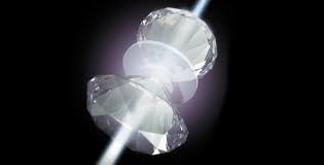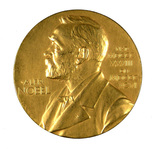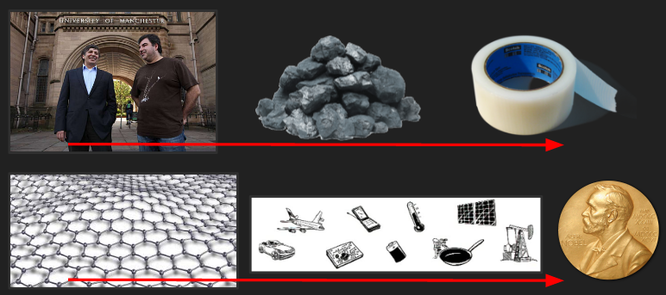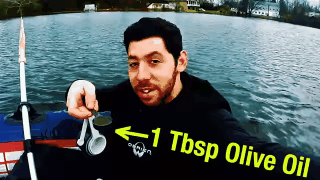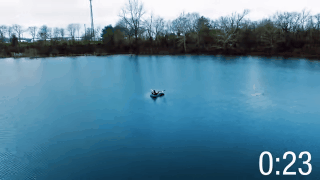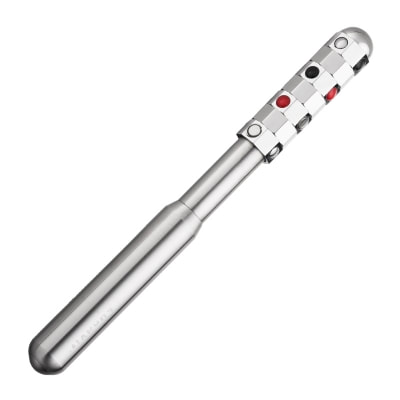Time: 5 min.
Task: Hydrogen exists as simple covalent molecules. What would need to be done to make hydrogen gas exhibit metallic bonding?
Possible answer: Scientists are investigating a creative yet very simple way of doing so...LINK.
Task: Hydrogen exists as simple covalent molecules. What would need to be done to make hydrogen gas exhibit metallic bonding?
Possible answer: Scientists are investigating a creative yet very simple way of doing so...LINK.
NOS statement 1.7 - Scientists must adopt a skeptical attitude to claims.
Extension: How would you prove that "metallic hydrogen" has been made? The scientific community is currently scrutinising the results. LINK.
|
Image - "Nobel Prize Medal"
|
Subtopic 4.3 - Covalent structures
NOS statement 5.6 - Many scientific discoveries have come from speculation or simple curiosity about particular phenomena.
Time: 5 min.
Task: Look at the image below. Can you guess what the story of this Nobel prize winning discovery? |
Find out about the full story here.
References:
"Nobel Prize Medal". C2.staticflickr.com. N.p., 2016. Web. 26 Sept. 2016.
"Nobel Prize Medal". C2.staticflickr.com. N.p., 2016. Web. 26 Sept. 2016.
Activity 3 - The 1987 Montreal Protocol
|
Subtopic 14.1 - Further aspects of covalent bonding
NOS statement 4.3 - Examples of large scale collaboration
Time: 10 min
Task: Watch the video to the right and make a list of possible consequences had the Montreal Protocol not been passed. |
|
Activity 4 - Calming waves on a lake with oil
Subtopic 4.4 - Intermolecular forces
NOS statement 1.9 - Evidence is used to propose hypotheses and make predictions
Time: 5 min
Task: Use your observations in the GIFs below to propose a hypothesis about the solubility of olive oil in water. Given that water is a polar molecule, predict the polarity and intermolecular forces found in the oil.
Extension: Can you explain why this calm the waves on the lake?
Activity 5 - What really causes bonding?
Topic 4 - Chemical bonding and structure
NOS statement 1.1 - The underlying assumption of science is that the universe has an independent, external reality accessible to human senses and amenable to human reason.
Time: 5 min.
Task: Take any type of bonding and begin to ask why it happens. Continue to ask why? until you can go no further.
- In which field do you end up?
- What are the origins of our ability to try and explain bonding?
- Where is the limit to our reason and modelling?
Extension: Where do you go if you keep asking why? How is potential energy explained? Where is the limit to our modelling of the universe?
Activity 6 - 'Negative ions' and pseudoscience
|
Topic 4.1 - Ionic bonding and structure
NOS statement 5.4 - Pseudoscience is the term applied to those beliefs and practices which claim to be scientific but do not meet or follow the standards of proper scientific methodologies.
Time: 10 min.
Task: A website claims the following about the Lunavit Energy Stick: "Made of pure surgical steel, it contains strong magnets, 99.99% germanium and negative ions. Just press or roll the blood-enhancing Pain Relief Roller over aching points or use it as a beauty improver."
|
